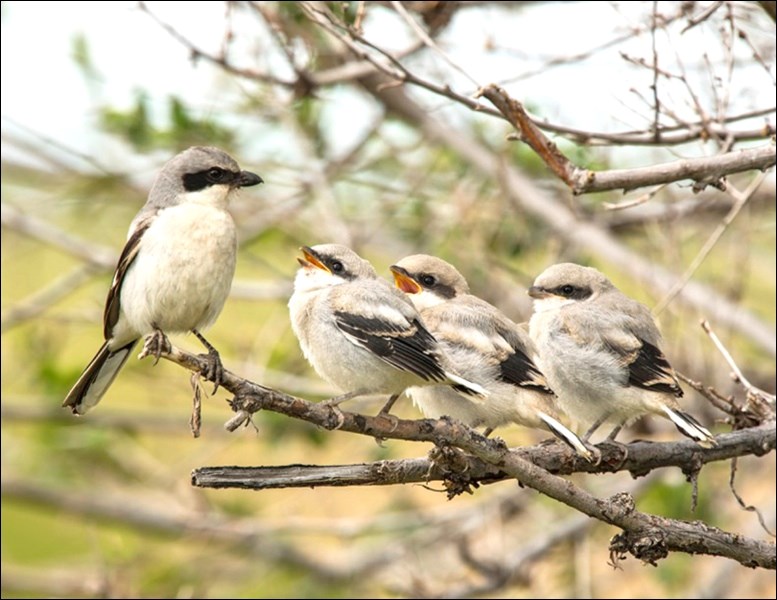Keep your eyes peeled for young loggerhead shrikes, also known as butcher birds. Nests of four to seven adorable young are growing stronger, adventuring out close to their nests to practice their flying and hunting skills, impaling their prey on barbed wire, thorns or dead branches on shrubs.
These threatened, migratory songbirds rely on Saskatchewan as an important part of their breeding range, and their young are learning the ropes as they explore. Rebecca Magnus, habitat stewardship co-ordinator with Nature Saskatchewan, explains.
“This is a perfect time to observe young shrikes clumsily trying to impale prey on sharp objects.
“Loggerhead Shrikes are songbirds that act like hawks, except they do not have talons to help tear their prey into bite-sized pieces,” explains Magnus. “Instead, they use thorns and other sharp objects to hold their prey while they rip off smaller bits of flesh with their hooked beaks.”
A shrike’s diet primarily consists of beetles, bees, voles, snakes, frogs, mice and grasshoppers.
“They are a great form of natural pest control,” says Magnus.
Loggerhead Shrikes are a bit smaller than American Robins. They have a grey back, white under parts, and distinctive white markings on their wings and tail, which contrast the dominant black colour in those areas. They also have a distinctive black mask that extends from their black beak past their eyes.
Nature Saskatchewan works with rural landowners through their voluntary stewardship program, Shrubs for Shrikes, to conserve shrike hunting and nesting habitat. If you see a Loggerhead Shrike or impaled prey, please call 1-800-667-4668 toll free to help monitor the population.



